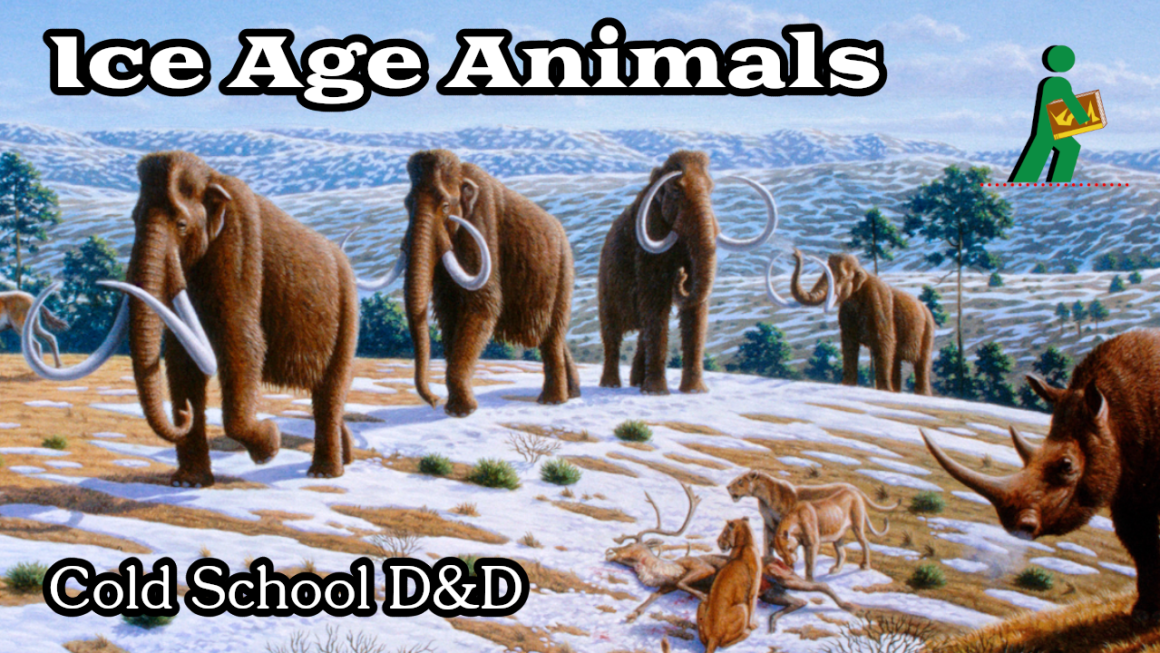
Ice Age Animals | Cold School D&D | Wandering DMs S06 E03

Paul & Dan dig into the buried fossils of original D&D — like the hidden encounter table for Ice Age adventures in the original boxed set. Where else can you get to use Cave Bears, Woolly Mammoths, and Saber-Toothed Tigers in your fantasy RPG? Pour a cup of hot cocoa and bundle up for this one.
In the Late Pleistocene, both marine and continental faunas were essentially modern but with many more large land mammals such as Mammoths, Mastodons, Diprotodons, Smilodons, tigers, lions, Aurochs, short-faced bears, giant sloths, species within Gigantopithecus and others. Isolated landmasses such as Australia, Madagascar, New Zealand and islands in the Pacific saw the evolution of large birds and even reptiles such as the Elephant bird, moa, Haast’s eagle, Quinkana, Megalania and Meiolania.
The severe climatic changes during the Ice Age had major impacts on the fauna and flora. With each advance of the ice, large areas of the continents became depopulated, and plants and animals retreating southwards in front of the advancing glacier faced tremendous stress. The most severe stress resulted from drastic climatic changes, reduced living space, and curtailed food supply. A major extinction event of large mammals (megafauna), which included mammoths, mastodons, saber-toothed cats, glyptodons, the woolly rhinoceros, various giraffids, such as the Sivatherium; ground sloths, Irish elk, cave lions, cave bears, Gomphotheres, American lions, dire wolves, and short-faced bears, began late in the Pleistocene and continued into the Holocene. Neanderthals also became extinct during this period. At the end of the last ice age, cold-blooded animals, smaller mammals like wood mice, migratory birds, and swifter animals like whitetail deer had replaced the megafauna and migrated north. Late Pleistocene bighorn sheep were more slender and had longer legs than their descendants today. Scientists believe that the change in predator fauna after the late Pleistocene extinctions resulted in a change of body shape as the species adapted for increased power rather than speed.
This description uses material from the Wikipedia article “Pleistocene“, which is released under the Creative Commons Attribution-Share-Alike License 3.0.
Cover image by Mauricio Antón from an article by Caitlin Sedwick (1 April 2008): “What Killed the Woolly Mammoth?”. PLoS Biology 6 (4): e99. DOI:10.1371/journal.pbio.0060099 2008 Public Library of Science. This is an open-access article distributed under the terms of the Creative Commons Attribution License, which permits unrestricted use, distribution, and reproduction in any medium, provided the original author and source are credited.

